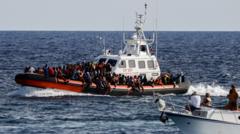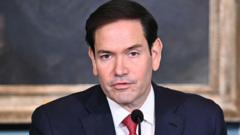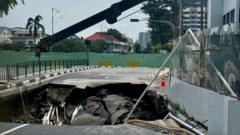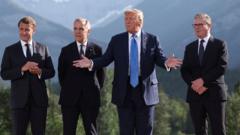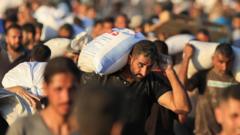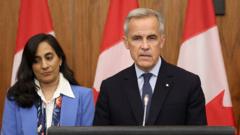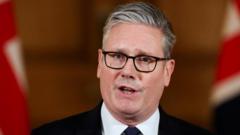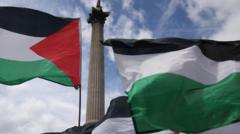**The visit comes at a time when international agencies report alarming deaths related to aid access, with locals criticizing the gesture as ineffective.**
**Controversial Gaza Aid Visit: US Envoy Faces Criticism Amid Humanitarian Crisis**
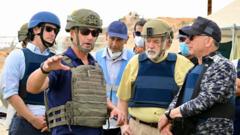
**Controversial Gaza Aid Visit: US Envoy Faces Criticism Amid Humanitarian Crisis**
**Steve Witkoff’s visit to Gaza raises concerns over the effectiveness and safety of aid distribution amidst ongoing violence.**
Steve Witkoff, President Donald Trump's Middle East envoy, made a significant yet controversial visit to a US- and Israel-backed aid distribution site in Gaza, known as the Gaza Humanitarian Foundation (GHF). The trip aims to provide Trump with an in-depth understanding of the dire humanitarian conditions in Gaza and to create strategies for delivering essential food and medical aid to its residents.
This visit is particularly poignant against the backdrop of troubling reports from the United Nations, which states at least 859 Palestinians have died in the vicinity of GHF points due to violence—claims the GHF disputes. While Israeli officials maintain that its military acts only in self-defense with warning shots, the lack of independent reporting from journalists hinder objective verification, as access to Gaza is severely restricted.
Witkoff's itinerary included a GHF site near Rafah in southern Gaza, where he was accompanied by US Ambassador to Israel Mike Huckabee and members of the Israel Defense Forces (IDF). On social media, Witkoff shared insights from their five-hour visit, asserting they assessed the conditions on the ground and engaged with GHF and other humanitarian organizations. Huckabee touted the GHF's operations, claiming they distributed over one million meals a day—though critics argue that these figures do not align with the total nutritional needs of the population.
Local residents expressed skepticism over Witkoff's presence, with some calling it a "media stunt" rather than a genuine humanitarian endeavor. Comments from Gazans like Louay Mahmoud highlighted a serious dissatisfaction, insisting that true support requires the lifting of blockades and an end to violence, rather than mere appearances from US officials.
Scott Paul, Oxfam's Americas director of peace and security, emphasized that Witkoff and Huckabee were likely confronted with the harsh reality of children and families near starvation during their visit. Critics, notably former US officials and human rights groups, lambasted the trip as an ineffective attempt to mask an escalating humanitarian disaster that many feel the US is partially responsible for.
This situation has been further complicated by alarming reports from humanitarian organizations like Human Rights Watch (HRW), indicating a "militarized aid distribution system" fraught with violence. HRW has condemned the use of live ammunition by Israeli forces against civilians near aid checkpoints—a move they assert endangers lives and impedes humanitarian efforts.
The GHF, which has recently taken over distribution from the UN, operates under a system that many in the international community view as flawed. While the IDF reported the delivery of critical aid through airdrops, organizations emphasize that land access is vital to provide more substantial support and better quality supplies.
Recent statistics from the UN indicate persistent violence in Gaza, with tragic confirmation that a significant number of fatalities resulted from attempts to access food aid. The persistent calls for reforms in the aid sector continue as negotiations regarding a ceasefire remain tense.
While Witkoff held talks with Israeli Prime Minister Benjamin Netanyahu, discussions about forthcoming strategies for ceasefire negotiations now appear increasingly complex, especially with ongoing violence and claims from various stakeholders about the underlying causes of the crisis.
As the conflict drags on, the suffering of Gazans continues to draw international attention, raising critical questions about the efficacy of current aid efforts and the broader implications of US foreign policy in the region.


